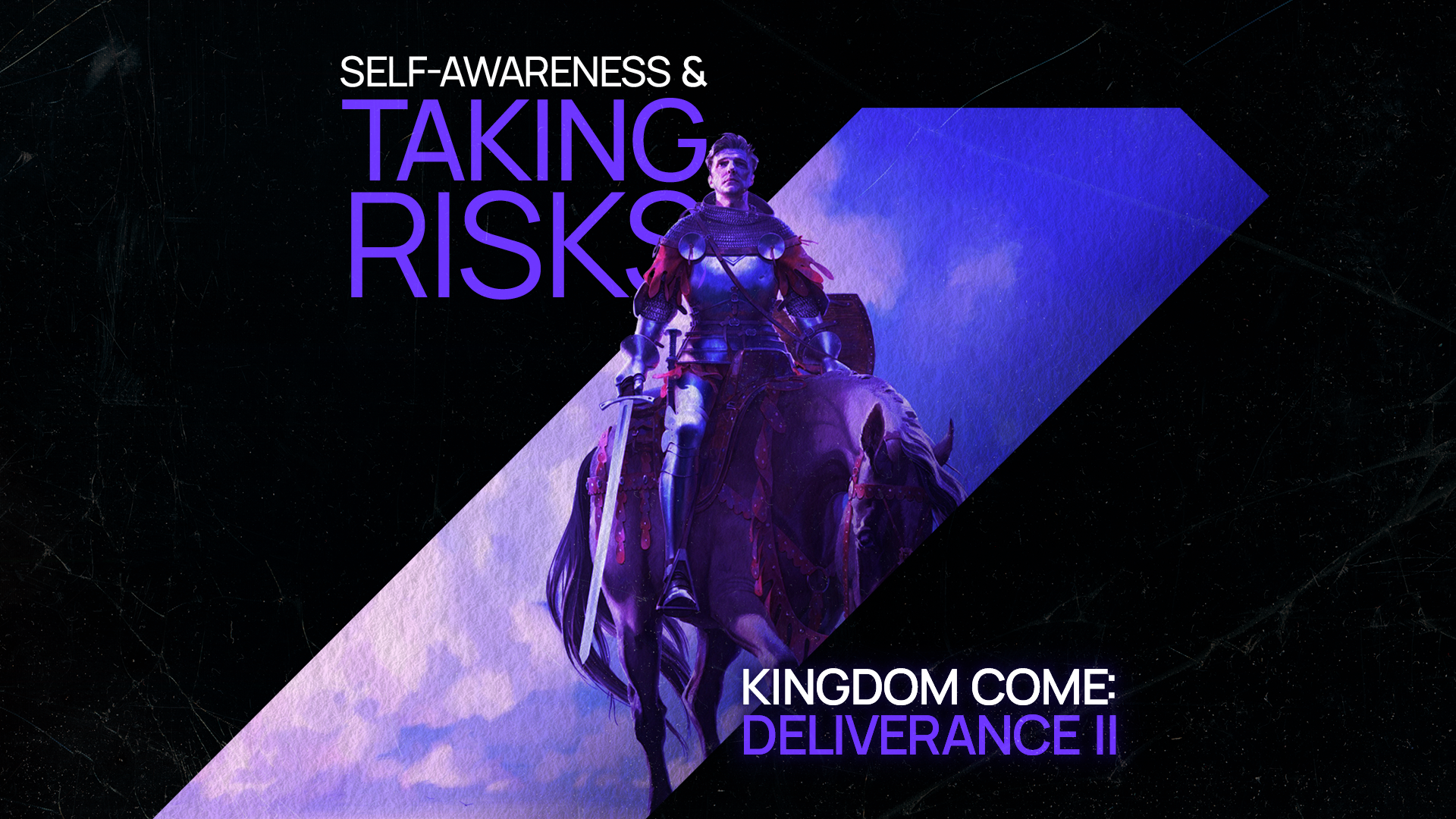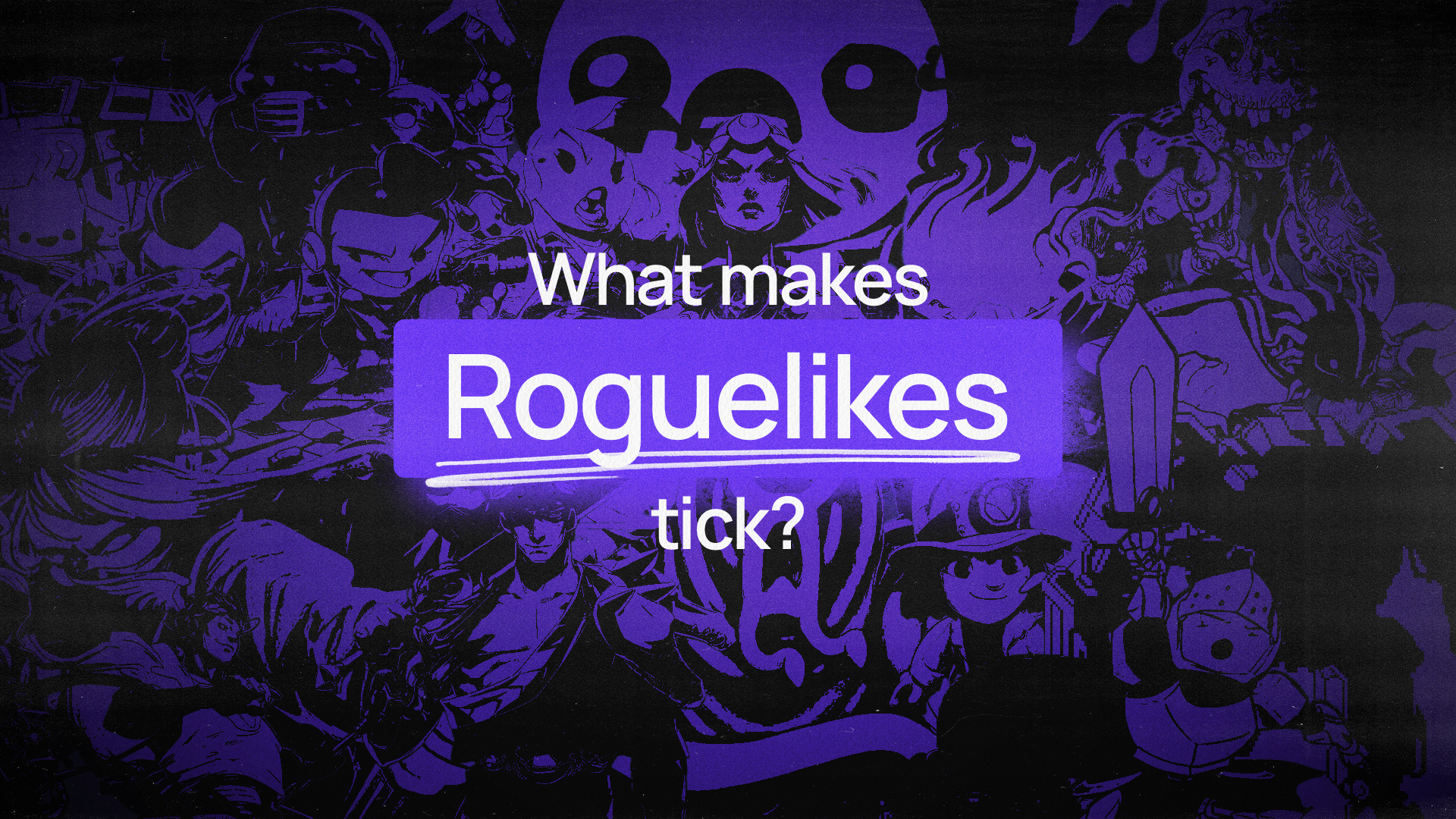Trends
10 Minute Read
What makes Roguelikes tick?

Ugh, my head is throbbing, where am I? I have a desk, some paper, and a pen. What does this note say? ‘Write a Roguelike article. Make it good.’ Oh, they could have just emailed me, imprisonment wasn’t necessary. But, I suppose, I’m here now, I may as well give it a try...
Roguelike vs Roguelite
Roguelike and roguelite games, both inspired by the 1980 game Rogue (Epyx Inc.), are built on procedurally-generated levels getting as far as possible in one run.
The key distinction lies in progression: roguelikes typically feature no meta-progression, meaning players begin every run with nothing carried over, while roguelites incorporate meta-progression, allowing players to retain certain upgrades or abilities between runs, making subsequent attempts more manageable.
Why are Roguelikes and Roguelites so addictive?
The rising popularity of these genres is likely due to their inherent replayability, in fact, replaying is built into the game’s design. This creates an evolving challenge in which you’re trying to beat your personal best. The sense of mastery you get from learning and adapting is very rewarding, as you’re literally improving yourself, culminating in an addictive, ‘one more run’ effect.
Why are Roguelikes and Roguelites so hot right now?
Some developers may favour these genres for the efficiency of procedural generation. Meaning they can design the overall parameters of how levels are generated, then players get an almost infinite variety of new levels. This is obviously more ‘efficient’ than manually designing every inch of every level.
Where do I go with this article, now? Perhaps, I need to give my opinions faster. Let’s try another run at it. Think conversational, concise. I can do this…
Roguelikes were originally inspired by the game Rogue (1980, Epyx Inc.) but have since taken on a life of their own. In a Roguelike, each time your character dies, you start again from the beginning. Or, in the case of Roguelites, you start from the beginning with some of your progress carrying over between lives. And, in each run, the levels you need to tackle are generated anew.
But, why are they so hot right now? As computational power has increased, developers have been able to generate more complex levels. But, more than that, replayability is more important than it used to be. Games used to be more disposable experiences, consumed and then forgotten. Occasionally we’d replay old games for nostalgia or for multiplayer but, now, games are expected to be years-long commitments with ongoing content updates.
Hmm, perhaps, I’m repeating myself too much. I’ll take another pass at it but I’ll look for some kind of shortcut.
Where did this waterfall come from? Is it a huge, fancy basin? Well, you know what they say: always check behind the waterfall. Ah ha! A portal! Looks like I’m back where I was before in the article. Alright, time to think about where this genre is heading next.
-

The Binding of Isaac
-

Hades
The Future of Roguelikes
As technology advances, the capabilities of procedural generation are expanding beyond simply randomised levels. AI-driven world-building could bring even more nuanced and reactive environments, where the game adapts to individual play styles. Imagine a roguelike where the enemies evolve alongside you, learning from your tactics and forcing you to reinvent your approach.
Games like ‘Hades’ (2020), for example, have moved the genre forward by demonstrating that deep story and roguelike mechanics don’t have to be at odds. Future roguelikes may integrate deeper narrative elements, where progression isn’t just about stats but about uncovering secrets buried within an ever-changing world.
While some already exist, multiplayer roguelikes have unexplored potential. Imagine an online roguelike where players interact in real-time, influencing each other’s runs in unexpected ways.
Wait! The cell door seems to be opening, time to wrap this up before another note arrives.
The joy of discovery
Why do we love them so much? There’s an innate human drive at play here: the joy of discovery. Every run in a roguelike or roguelite presents something new, whether it’s a level layout, a weapon, an enemy pattern, etc. These things keep the game feeling fresh, forcing players to adapt and learn organically.
Plus, many modern roguelikes encourage competition. This sees players share strategies, dissect builds, and trade stories of their best and worst runs. The unpredictability also makes them great games to watch; ideal for streamers and content creators.
Ultimately, the roguelike taps into something primal: the desire to conquer the unknown. And, with each failed attempt, the urge to try again grows stronger.
Freedom! I did it! I finished the article! Now, who do I invoice for this, I wonder? And, how do I spell ‘extenuating circumstances’?
Related Articles

News
Celebrating Women in Gaming: 10 Great Games made by Women
It’s (almost) International Women’s Day, so, what better way to celebrate than with games made by women? I’ve compiled a list of my favourite female-led video games and the women involved in their development belo...
Carla Pasini,
Creative Copywriter10 Minute Read

New Work
Self-Awareness and Taking Risks: Kingdom Come: Deliverance 2’s Social Media Success
KCDII has ridden a wave of social media success up to and beyond its release, thanks to the campaign’s willingness to double-down on the game’s identity, embrace the tone of internet culture, and do all this in a polished manner...
Sam Polti,
Senior Conceptual Copywriter15 Minute Read

